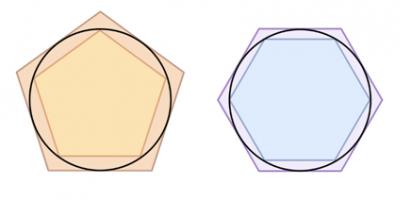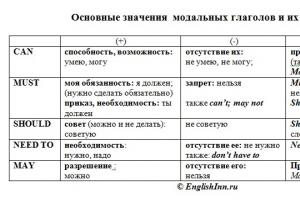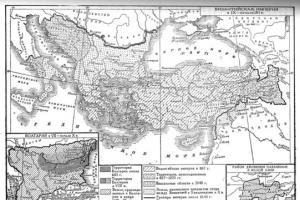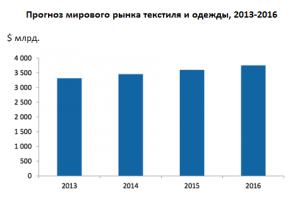This calculator allows you to solve a definite integral online. In fact, definite integral calculation is finding a number that is equal to the area under the graph of a function. To solve, it is necessary to specify the boundaries of integration and the function to be integrated. After integration, the system will find the antiderivative for the given function, calculate its values at the points on the boundaries of integration, find their difference, which will be the solution to the definite integral. To solve an indefinite integral, you need to use a similar online calculator, which is located on our website at the link - Solve an indefinite integral.
We allow calculate definite integral online quickly and reliably. You will always get the right decision. Moreover, for tabular integrals the answer will be presented in a classical form, that is, expressed through known constants, such as the number “pi”, “exponent”, etc. All calculations are completely free and do not require registration. By solving a definite integral with us, you will save yourself from time-consuming and complex calculations, or by solving the integral yourself, you will be able to check the solution you obtained.
What are integrals for? Try to answer this question for yourself.
When explaining the topic of integrals, teachers list areas of application that are of little use to school minds. Among them:
- calculating the area of a figure.
- Calculation of body mass with uneven density.
- determining the distance traveled when moving at a variable speed.
- and etc.
It is not always possible to connect all these processes, so many students get confused, even if they have all the basic knowledge to understand the integral.
The main reason for ignorance– lack of understanding of the practical significance of integrals.
Integral - what is it?
Prerequisites. The need for integration arose in Ancient Greece. At that time, Archimedes began to use methods that were essentially similar to modern integral calculus to find the area of a circle. The main approach for determining the area of uneven figures then was the “Exhaustion Method”, which is quite easy to understand.
The essence of the method. A monotonic sequence of other figures fits into this figure, and then the limit of the sequence of their areas is calculated. This limit was taken as the area of this figure.

This method easily traces the idea of integral calculus, which is to find the limit of an infinite sum. This idea was later used by scientists to solve applied problems astronautics, economics, mechanics, etc.
Modern integral. The classical theory of integration was formulated in general form by Newton and Leibniz. It relied on the then existing laws of differential calculus. To understand it, you need to have some basic knowledge that will help you use mathematical language to describe visual and intuitive ideas about integrals.
We explain the concept of “Integral”
The process of finding the derivative is called differentiation, and finding the antiderivative – integration.
Integral mathematical language– this is the antiderivative of the function (what was before the derivative) + the constant “C”.
Integral in simple words is the area of a curvilinear figure. The indefinite integral is the entire area. The definite integral is the area in a given area.
The integral is written like this:

Each integrand is multiplied by the "dx" component. It shows over which variable the integration is being carried out. "dx" is the increment of the argument. Instead of X there can be any other argument, for example t (time).
Indefinite integral
An indefinite integral has no limits of integration.
To solve indefinite integrals, it is enough to find the antiderivative of the integrand and add “C” to it.
Definite integral
In a definite integral, the restrictions “a” and “b” are written on the integration sign. These are indicated on the X-axis in the graph below.

To calculate a definite integral, you need to find the antiderivative, substitute the values “a” and “b” into it and find the difference. In mathematics this is called Newton-Leibniz formula:

Table of integrals for students (basic formulas)

Download the integral formulas, they will be useful to you
How to calculate the integral correctly
There are several simple operations for transforming integrals. Here are the main ones:
Removing a constant from under the integral sign
![]()
Decomposition of the integral of a sum into the sum of integrals

If you swap a and b, the sign will change

You can split the integral into intervals as follows

These are the simplest properties, on the basis of which more complex theorems and methods of calculus will later be formulated.
Examples of integral calculations
Solving the indefinite integral

Solving the definite integral

Basic concepts for understanding the topic
So that you understand the essence of integration and do not close the page from misunderstanding, we will explain a number of basic concepts. What is a function, derivative, limit and antiderivative.
Function– a rule according to which all elements from one set are correlated with all elements from another.
Derivative– a function that describes the rate of change of another function at each specific point. In strict language, this is the limit of the ratio of the increment of a function to the increment of the argument. It is calculated manually, but it is easier to use a derivative table, which contains most of the standard functions.
Increment– a quantitative change in the function with some change in the argument.
Limit– the value to which the function value tends when the argument tends to a certain value.
An example of a limit: let's say if X is equal to 1, Y will be equal to 2. But what if X is not equal to 1, but tends to 1, that is, it never reaches it? In this case, y will never reach 2, but will only tend to this value. In mathematical language this is written as follows: limY(X), as X –> 1 = 2. It reads: the limit of the function Y(X), as x tends to 1, is equal to 2.
As already mentioned, a derivative is a function that describes another function. The original function may be a derivative of some other function. This other function is called antiderivative.
Conclusion
Finding the integrals is not difficult. If you don't understand how to do this, . The second time it becomes clearer. Remember! Solving integrals comes down to simple transformations of the integrand and searching for it in .
If the text explanation doesn’t suit you, watch the video about the meaning of the integral and derivative:
Integrals - what they are, how to solve, examples of solutions and explanation for dummies updated: November 22, 2019 by: Scientific Articles.Ru
Examples of calculating indefinite integrals
Calculation of the integral from the table

![]()
Integration by substitution:





Examples of integral calculations
Newton–Leibniz basic formula
![]()


Substitution calculations


Chapter 4 Differential equations.
Differential equation is an equation that relates an independent variable to each other X , the required function at and its derivatives or differentials.
The symbolically differentiated equation is written as follows:
The differential equation is called ordinary, if the required function depends on one independent variable.
In order of a differential equation is the order of the highest derivative (or differential) included in this equation.
By decision(or integral) of a differential equation is a function that turns this equation into an identity.
General solution(or general integral) of a differential equation is a solution that includes as many independent arbitrary constants as the order of the equation. Thus, the general solution of a first-order differential equation contains one arbitrary constant.
Private decision A differential equation is a solution obtained from a general solution for different numerical values of arbitrary constants. The values of arbitrary constants are found at certain initial values of the argument and function.
The graph of a particular solution to a differential equation is called integral curve.
The general solution of a differential equation corresponds to a set (family) of all integral curves.
First order differential equation is an equation that includes derivatives (or differentials) of no higher than first order.
Differential equation with separable variables called an equation of the form
![]()
To solve this equation, you must first separate the variables:
![]()
and then integrate both sides of the resulting equality:
![]()
1. Find the general solution to the equation
o Dividing the variables we have

Integrating both sides of the resulting equation:
Since an arbitrary constant WITH can take any numerical values, then for the convenience of further transformations, instead of C we wrote (1/2)ln C. Potentiating the last equality we get
This is the general solution to this equation.
Literature
V. G. Boltyansky, What is differentiation, “Popular lectures on mathematics”,
Issue 17, Gostekhizdat 1955, 64 pages.
V. A. Gusev, A. G. Mordkovich “Mathematics”
G. M. Fikhtengolts “Course of differential and integral calculus”, volume 1
V. M. Borodikhin, Higher Mathematics, textbook. manual, ISBN 5-7782-0422-1.
Nikolsky S. M. Chapter 9. Riemann’s definite integral // Course of mathematical analysis. - 1990. - T. 1.
Ilyin V. A., Poznyak, E. G. Chapter 6. Indefinite integral // Fundamentals of mathematical analysis. - 1998. - T. 1. - (Course of higher mathematics and mathematical physics).
Demidovich B.P. Section 3. Indefinite integral // Collection of problems and exercises on mathematical analysis. - 1990. - (Course of higher mathematics and mathematical physics).
Valutse I.I., Diligul G.D. Mathematics for technical schools based on secondary schools: Textbook-2nd edition, revised. and additional M.6Science. 1989
Kolyagin Yu.M. Yakovlev G.N. mathematics for technical schools. Algebra and beginnings of analysis, parts 1 and 2. Publishing house "Naukka" M., 1981.
Shchipachev V.S. Problems in higher mathematics: Proc. A manual for universities. Higher Shk. 1997
Bogomolov N.V. practical lessons in mathematics: textbook. Manual for technical schools. Higher Shk 1997
Definite integral. Examples of solutions
Hello again. In this lesson we will examine in detail such a wonderful thing as a definite integral. This time the introduction will be short. All. Because there is a snowstorm outside the window.
In order to learn how to solve definite integrals you need to:
1) Be able to find indefinite integrals.
2) Be able to calculate definite integral.
As you can see, in order to master a definite integral, you need to have a fairly good understanding of “ordinary” indefinite integrals. Therefore, if you are just starting to dive into integral calculus, and the kettle has not yet boiled at all, then it is better to start with the lesson Indefinite integral. Examples of solutions. In addition, there are pdf courses for ultra-fast preparation- if you literally have a day, half a day left.
In general form, the definite integral is written as follows:
What is added compared to the indefinite integral? More limits of integration.
Lower limit of integration
Upper limit of integration is standardly denoted by the letter .
The segment is called segment of integration.
Before we move on to practical examples, a quick faq on the definite integral.
What does it mean to solve a definite integral? Solving a definite integral means finding a number.
How to solve a definite integral? Using the Newton-Leibniz formula familiar from school:

It is better to rewrite the formula on a separate piece of paper; it should be in front of your eyes throughout the entire lesson.
The steps for solving a definite integral are as follows:
1) First we find the antiderivative function (indefinite integral). Note that the constant in the definite integral not added. The designation is purely technical, and the vertical stick does not carry any mathematical meaning; in fact, it is just a marking. Why is the recording itself needed? Preparation for applying the Newton-Leibniz formula.
2) Substitute the value of the upper limit into the antiderivative function: .
3) Substitute the value of the lower limit into the antiderivative function: .
4) We calculate (without errors!) the difference, that is, we find the number.
Does a definite integral always exist? No not always.
For example, the integral does not exist because the segment of integration is not included in the domain of definition of the integrand (values under the square root cannot be negative). Here's a less obvious example: . Here on the integration interval tangent endures endless breaks at points , , and therefore such a definite integral also does not exist. By the way, who hasn’t read the teaching material yet? Graphs and basic properties of elementary functions– the time to do it is now. It will be great to help throughout the course of higher mathematics.
For that for a definite integral to exist at all, it is sufficient that the integrand is continuous on the interval of integration.
From the above, the first important recommendation follows: before you begin solving ANY definite integral, you need to make sure that the integrand function is continuous on the interval of integration. When I was a student, I repeatedly had an incident when I struggled for a long time with finding a difficult antiderivative, and when I finally found it, I racked my brains over another question: “What kind of nonsense did it turn out to be?” In a simplified version, the situation looks something like this:
 ???! You cannot substitute negative numbers under the root! What the hell is this?! Initial inattention.
???! You cannot substitute negative numbers under the root! What the hell is this?! Initial inattention.
If for a solution (in a test, test, exam) you are offered an integral like or , then you need to give an answer that this definite integral does not exist and justify why.
! Note : in the latter case, the word “certain” cannot be omitted, because an integral with point discontinuities is divided into several, in this case into 3 improper integrals, and the formulation “this integral does not exist” becomes incorrect.
Can a definite integral be equal to a negative number? Maybe. And a negative number. And zero. It may even turn out to be infinity, but it will already be improper integral, which are given a separate lecture.
Can the lower limit of integration be greater than the upper limit of integration? Perhaps this situation actually occurs in practice.
– the integral can be easily calculated using the Newton-Leibniz formula.
What is higher mathematics indispensable? Of course, without all sorts of properties. Therefore, let's consider some properties of the definite integral.
In a definite integral, you can rearrange the upper and lower limits, changing the sign:

For example, in a definite integral, before integration, it is advisable to change the limits of integration to the “usual” order:
 – in this form it is much more convenient to integrate.
– in this form it is much more convenient to integrate.

 – this is true not only for two, but also for any number of functions.
– this is true not only for two, but also for any number of functions.
In a definite integral one can carry out replacement of integration variable, however, compared to the indefinite integral, this has its own specifics, which we will talk about later.
For a definite integral the following holds true: integration by parts formula:
Example 1
Solution:
(1) We take the constant out of the integral sign.
(2) Integrate over the table using the most popular formula ![]() . It is advisable to separate the emerging constant from and put it outside the bracket. It is not necessary to do this, but it is advisable - why the extra calculations?
. It is advisable to separate the emerging constant from and put it outside the bracket. It is not necessary to do this, but it is advisable - why the extra calculations?
 . First we substitute the upper limit, then the lower limit. We carry out further calculations and get the final answer.
. First we substitute the upper limit, then the lower limit. We carry out further calculations and get the final answer.
Example 2
Calculate definite integral
This is an example for you to solve on your own, the solution and answer are at the end of the lesson.
Let's complicate the task a little:
Example 3
Calculate definite integral ![]()
Solution: 
(1) We use the linearity properties of the definite integral.
(2) We integrate according to the table, while taking out all the constants - they will not participate in the substitution of the upper and lower limits.
(3) For each of the three terms we apply the Newton-Leibniz formula: ![]()
THE WEAK LINK in the definite integral is calculation errors and common CONFUSION IN SIGNS. Be careful! I focus special attention on the third term: ![]() – first place in the hit parade of errors due to inattention, very often they write automatically
– first place in the hit parade of errors due to inattention, very often they write automatically ![]() (especially when the substitution of the upper and lower limits is carried out verbally and is not written out in such detail). Once again, carefully study the above example.
(especially when the substitution of the upper and lower limits is carried out verbally and is not written out in such detail). Once again, carefully study the above example.
It should be noted that the considered method of solving a definite integral is not the only one. With some experience, the solution can be significantly reduced. For example, I myself am used to solving such integrals like this:

Here I verbally used the rules of linearity and verbally integrated using the table. I ended up with just one bracket with the limits marked out:  (unlike three brackets in the first method). And into the “whole” antiderivative function, I first substituted 4, then –2, again performing all the actions in my mind.
(unlike three brackets in the first method). And into the “whole” antiderivative function, I first substituted 4, then –2, again performing all the actions in my mind.
What are the disadvantages of the short solution? Everything here is not very good from the point of view of the rationality of calculations, but personally I don’t care - I calculate ordinary fractions on a calculator.
In addition, there is an increased risk of making an error in the calculations, so it is better for a tea student to use the first method; with “my” method of solving, the sign will definitely be lost somewhere.
However, the undoubted advantages of the second method are the speed of solution, compactness of notation and the fact that the antiderivative is in one bracket.
Advice: before using the Newton-Leibniz formula, it is useful to check: was the antiderivative itself found correctly?
So, in relation to the example under consideration: before substituting the upper and lower limits into the antiderivative function, it is advisable to check on the draft whether the indefinite integral was found correctly? Let's differentiate:
The original integrand function has been obtained, which means that the indefinite integral has been found correctly. Now we can apply the Newton-Leibniz formula.
Such a check will not be superfluous when calculating any definite integral.
Example 4
Calculate definite integral 
This is an example for you to solve yourself. Try to solve it in a short and detailed way.
Changing a variable in a definite integral
For a definite integral, all types of substitutions are valid as for the indefinite integral. Thus, if you are not very good with substitutions, you should carefully read the lesson Substitution method in indefinite integral.
There is nothing scary or difficult in this paragraph. The novelty lies in the question how to change the limits of integration when replacing.
In examples, I will try to give types of replacements that have not yet been found anywhere on the site.
Example 5
Calculate definite integral
The main question here is not the definite integral, but how to correctly carry out the replacement. Let's look at table of integrals and figure out what our integrand function looks like most? Obviously, for the long logarithm: ![]() . But there is one discrepancy, in the table integral under the root, and in ours - “x” to the fourth power. The idea of replacement also follows from the reasoning - it would be nice to somehow turn our fourth degree into a square. It's real.
. But there is one discrepancy, in the table integral under the root, and in ours - “x” to the fourth power. The idea of replacement also follows from the reasoning - it would be nice to somehow turn our fourth degree into a square. It's real.
First, we prepare our integral for replacement:

From the above considerations, a replacement quite naturally arises:
Thus, everything will be fine in the denominator: .
We find out what the remaining part of the integrand will turn into, for this we find the differential:
![]()
Compared to replacement in the indefinite integral, we add an additional step.
Finding new limits of integration.
It's quite simple. Let's look at our replacement and the old limits of integration, .
First, we substitute the lower limit of integration, that is, zero, into the replacement expression:
Then we substitute the upper limit of integration into the replacement expression, that is, the root of three:
Ready. And just...
Let's continue with the solution.

(1) According to replacement write a new integral with new limits of integration.
(2) This is the simplest table integral, we integrate over the table. It is better to leave the constant outside the brackets (you don’t have to do this) so that it does not interfere with further calculations. On the right we draw a line indicating the new limits of integration - this is preparation for applying the Newton-Leibniz formula.
(3) We use the Newton-Leibniz formula  .
.
We strive to write the answer in the most compact form; here I used the properties of logarithms.
Another difference from the indefinite integral is that, after we have made the substitution, there is no need to carry out any reverse replacements.
And now a couple of examples for you to decide for yourself. What replacements to make - try to guess on your own.
Example 6
Calculate definite integral
Example 7
Calculate definite integral
These are examples for you to solve on your own. Solutions and answers at the end of the lesson.
And at the end of the paragraph, a couple of important points, the analysis of which appeared thanks to site visitors. The first one concerns legality of replacement. In some cases it cannot be done! Thus, Example 6, it would seem, can be solved using universal trigonometric substitution, however, the upper limit of integration ("pi") not included in domain this tangent and therefore this substitution is illegal! Thus, the “replacement” function must be continuous in all points of the integration segment.
In another email, the following question was received: “Do we need to change the limits of integration when we subsume a function under the differential sign?” At first I wanted to “dismiss the nonsense” and automatically answer “of course not,” but then I thought about the reason for such a question and suddenly discovered that there was no information lacks. But it, although obvious, is very important:
If we subsume the function under the differential sign, then there is no need to change the limits of integration! Why? Because in this case no actual transition to new variable. For example: ![]()
And here the summation is much more convenient than the academic replacement with the subsequent “painting” of new limits of integration. Thus, if the definite integral is not very complicated, then always try to put the function under the differential sign! It's faster, it's more compact, and it's commonplace - as you'll see dozens of times!
Thank you very much for your letters!
Method of integration by parts in a definite integral
There is even less novelty here. All calculations of the article Integration by parts in the indefinite integral are fully valid for the definite integral.
There is only one detail that is a plus; in the formula for integration by parts, the limits of integration are added:

The Newton-Leibniz formula must be applied twice here: for the product and after we take the integral.
For the example, I again chose the type of integral that has not yet been found anywhere on the site. The example is not the simplest, but very, very informative.
Example 8
Calculate definite integral
Let's decide. 
Let's integrate by parts: 
Anyone having difficulty with the integral, take a look at the lesson Integrals of trigonometric functions, it is discussed in detail there.

(1) We write the solution in accordance with the formula of integration by parts.
(2) For the product we apply the Newton-Leibniz formula. For the remaining integral we use the properties of linearity, dividing it into two integrals. Don't get confused by the signs!
(4) We apply the Newton-Leibniz formula for the two found antiderivatives.
To be honest, I don't like the formula.  and, if possible, ... I do without it at all! Let's consider the second solution; from my point of view, it is more rational.
and, if possible, ... I do without it at all! Let's consider the second solution; from my point of view, it is more rational.
Calculate definite integral
At the first stage I find the indefinite integral:
Let's integrate by parts:


The antiderivative function has been found. There is no point in adding a constant in this case.
What is the advantage of such a hike? There is no need to “carry around” the limits of integration; indeed, it can be exhausting to write down the small symbols of the limits of integration a dozen times
At the second stage I check(usually in draft).
Also logical. If I found the antiderivative function incorrectly, then I will solve the definite integral incorrectly. It’s better to find out immediately, let’s differentiate the answer:

The original integrand function has been obtained, which means that the antiderivative function has been found correctly.
The third stage is the application of the Newton-Leibniz formula:
And there is a significant benefit here! In “my” solution method there is a much lower risk of getting confused in substitutions and calculations - the Newton-Leibniz formula is applied only once. If the teapot solves a similar integral using the formula  (in the first way), then he will definitely make a mistake somewhere.
(in the first way), then he will definitely make a mistake somewhere.
The considered solution algorithm can be applied for any definite integral.
Dear student, print and save:
What to do if you are given a definite integral that seems complicated or it is not immediately clear how to solve it?
1) First we find the indefinite integral (antiderivative function). If at the first stage there was a bummer, there is no point in further rocking the boat with Newton and Leibniz. There is only one way - to increase your level of knowledge and skills in solving indefinite integrals.
2) We check the found antiderivative function by differentiation. If it is found incorrectly, the third step will be a waste of time.
3) We use the Newton-Leibniz formula. We carry out all calculations EXTREMELY CAREFULLY - this is the weakest link of the task.
And, for a snack, an integral for independent solution.
Example 9
Calculate definite integral
The solution and the answer are somewhere nearby.
The next recommended lesson on the topic is How to calculate the area of a figure using a definite integral?
Let's integrate by parts:

Are you sure you solved them and got these answers? ;-) And there is porn for an old woman.
The process of solving integrals in the science called mathematics is called integration. Using integration, you can find some physical quantities: area, volume, mass of bodies and much more.
Integrals can be indefinite or definite. Let's consider the form of the definite integral and try to understand its physical meaning. It is represented in this form: $$ \int ^a _b f(x) dx $$. A distinctive feature of writing a definite integral from an indefinite integral is that there are limits of integration a and b. Now we’ll find out why they are needed, and what a definite integral actually means. In a geometric sense, such an integral is equal to the area of the figure bounded by the curve f(x), lines a and b, and the Ox axis.
From Fig. 1 it is clear that the definite integral is the same area that is shaded in gray. Let's check this with a simple example. Let's find the area of the figure in the image below using integration, and then calculate it in the usual way of multiplying the length by the width.

From Fig. 2 it is clear that $ y=f(x)=3 $, $ a=1, b=2 $. Now we substitute them into the definition of the integral, we get that $$ S=\int _a ^b f(x) dx = \int _1 ^2 3 dx = $$ $$ =(3x) \Big|_1 ^2=(3 \ cdot 2)-(3 \cdot 1)=$$ $$=6-3=3 \text(units)^2 $$ Let's do the check in the usual way. In our case, length = 3, width of the figure = 1. $$ S = \text(length) \cdot \text(width) = 3 \cdot 1 = 3 \text(units)^2 $$ As you can see, everything matches perfectly .
The question arises: how to solve indefinite integrals and what is their meaning? Solving such integrals is finding antiderivative functions. This process is the opposite of finding the derivative. In order to find the antiderivative, you can use our help in solving problems in mathematics, or you need to independently memorize the properties of integrals and the table of integration of the simplest elementary functions. The finding looks like this: $$ \int f(x) dx = F(x) + C \text(where) F(x) $ is the antiderivative of $ f(x), C = const $.
To solve the integral, you need to integrate the function $ f(x) $ over a variable. If the function is tabular, then the answer is written in the appropriate form. If not, then the process comes down to obtaining a tabular function from the function $ f(x) $ through tricky mathematical transformations. There are various methods and properties for this, which we will consider further.
So, now let’s create an algorithm for solving integrals for dummies?
Algorithm for calculating integrals
- Let's find out the definite integral or not.
- If undefined, then you need to find the antiderivative function $ F(x) $ of the integrand $ f(x) $ using mathematical transformations leading to a tabular form of the function $ f(x) $.
- If defined, then you need to perform step 2, and then substitute the limits $ a $ and $ b $ into the antiderivative function $ F(x) $. You will find out what formula to use to do this in the article “Newton-Leibniz Formula”.
Examples of solutions
So, you have learned how to solve integrals for dummies, examples of solving integrals have been sorted out. We learned their physical and geometric meaning. The solution methods will be described in other articles.








